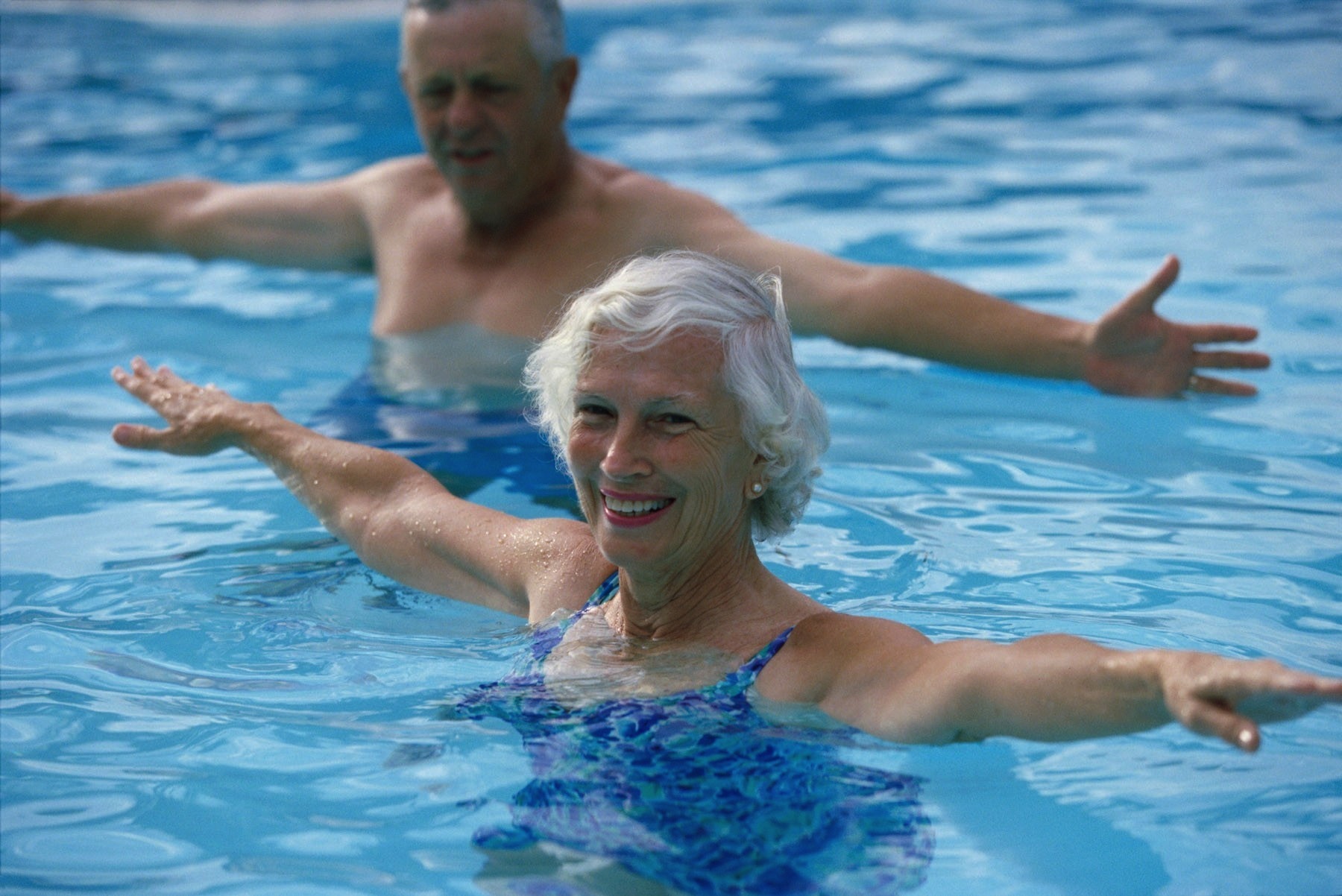Keep Going Strong: The Importance of Staying Active as an Older Adult
From a 2014 article by Dr. Jacqueline Kerr posted in Health & Wellness
The biggest principle for fitness is “Use it or lose it,” but research has shown that older adults tend to focus on positivity more than younger adults…so perhaps for this age group, it’s best to say, “Use it and keep going strong!”
Why do older adults need to stay physically active?
With age comes a decrease in cardiac output and lung performance, a reduction in insulin sensitivity and issues with hormone-/immune-system regulation. The good news is that physical activity can improve all these things; meaning, it is a great anecdote to aging. The greatest benefits come to those who are most frail and much too inactive. Simply put, the more you do, the better. Physical activity helps (1) reduce the number of heart attacks and strokes, as well as peripheral arterial circulation disturbances, and (2) lower incidence of hypertension. Furthermore, physical activity and the independence associated with being able to move around freely outdoors can improve life expectancy, sleep quality and overall quality of life.
How does physical activity help?
If you are moving, you are burning calories; this means mean you will have less body fat (which benefits many of the functions in your body). Physical activity also works your cardiovascular system; the heart is a muscle that, like all other muscles, works better when it is exercised. Pumping more blood around your body means more blood to vital organs and the brain, which also helps the body function better. Physical activity can help take you away from daily worries and also provide a means to be social with others.
The negative effects of sitting:
Only an estimated three percent of adults in the older age groups meet the federally recommended daily physical activity guidelines; in fact, nearly 70 percent of their daily time is spent sitting. Additionally, the benefits gained from physical activity can be lost due to extensive sitting; if you spend more than four hours a day sitting, you have an increased risk of cardiovascular disease, are more likely to be overweight and have a higher risk of diabetes.
Therefore, it’s important to break up prolonged periods of sitting with movement. Every half hour, try to stand up for at least two minutes. What can you do to be more physically active?
1. Start slowly, and check in with a doctor.
2. Get the right shoes, a hat, a water bottle, etc.
3. Build gradually to build up strength and stamina: 5 minutes a day, to 10 minutes a day, to 20 minutes, to 30 minutes, etc.
4. If you build physical activity into your day, it will eventually be easier to incorporate and become routine. Try to make it part of your daily life (e.g., errands).
5. Tell family members and friends to make you more accountable. Walk on family visits instead of sitting together.
6. Take the long way around when possible…no shortcuts!

